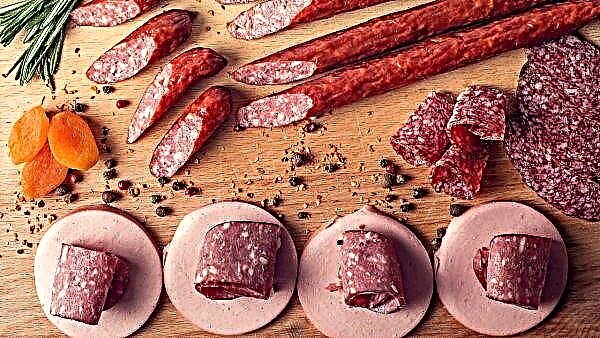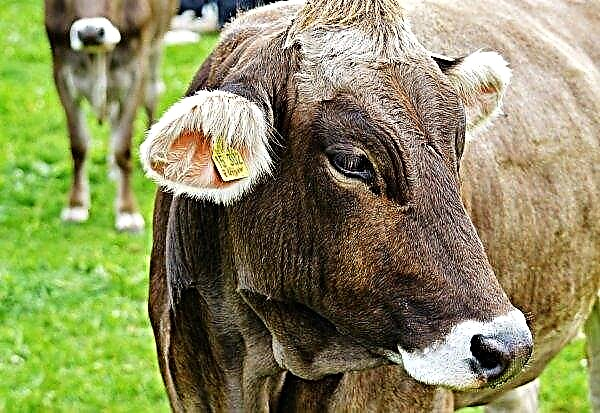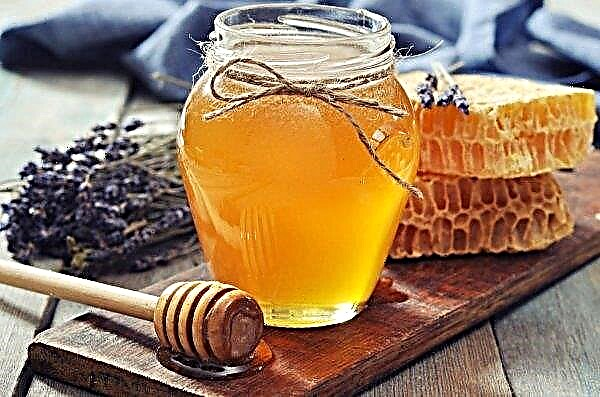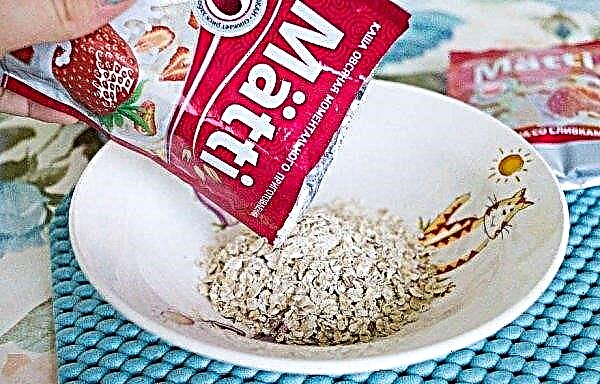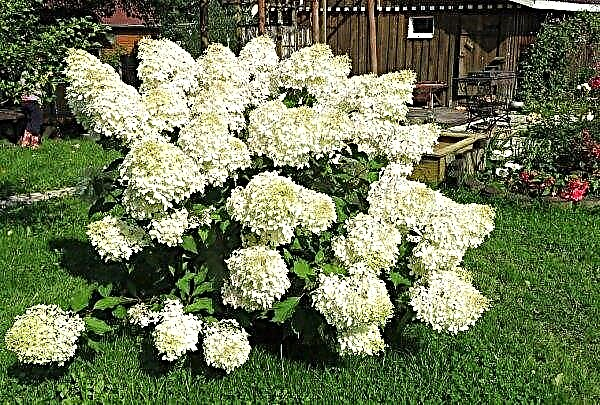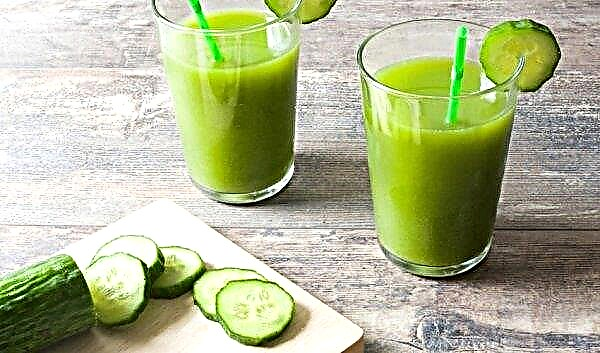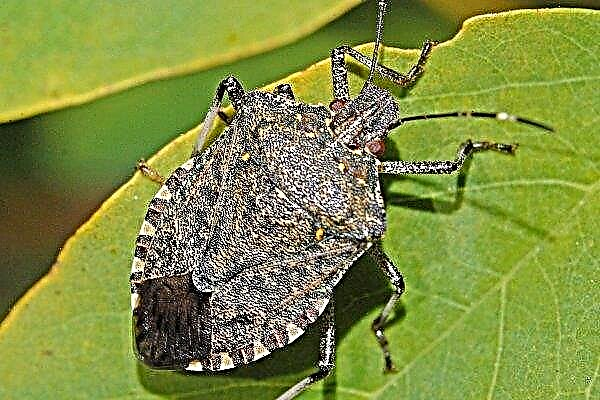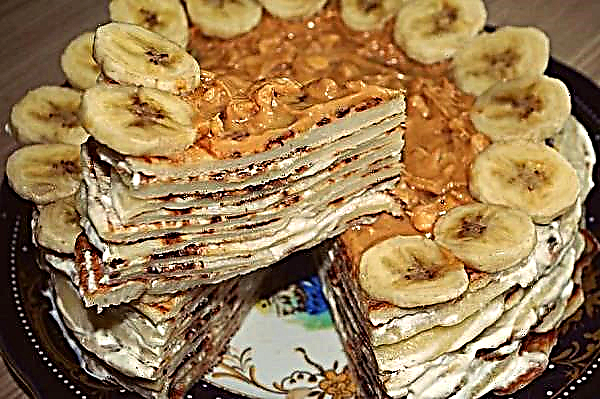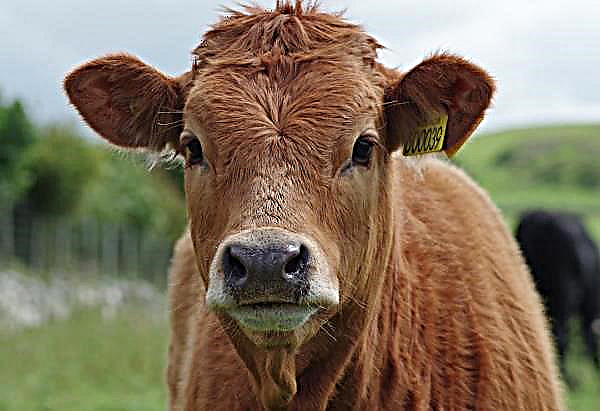Spectacular hydrangea flowers are an inexpensive decorative solution both for a home garden and for public places of rest. They do not require careful maintenance and will bloom perfectly, subject to the minimum rules. Read more about how to plant and grow a variety of Magic Starlight, read further in the material.
Grade description
Panicled Hydrangea Magical Starlight is a highly growing and well-branched shrub with green egg-shaped leaves on reddish shoots. Her elegant cone-shaped panicles of pure white color create a wonderful garden composition from July to September. The plant grows equally well in open ground and when planted in containers to decorate patios and arbors.
This variety can be shaped and grown as a bush or tree. The shape of the crown, regardless of how the plant is formed, will be rounded. Unlike other varieties, its strong branches do not tend to the ground under the weight of inflorescences, and therefore the bush always looks great.
Botanical grade description:
- name: Hydrangea Paniculata Magical Starlight;
- type: bush branched, deciduous, with a vertical point of growth;
- flowering: 2 times a year, in summer and autumn;
- flowers: white;
- height: from 1 to 1.5 m;
- width: between 75 cm and 1 m;
- Lighting: bright sun or partial shade;
- frost resistance: up to -30 ° C;
- soil type: slightly acidic;
- Designed for: patios and undersized gardens.
Video: Panicle hydrangea Mejkal Starlight
Winter hardiness
The division of the geographical map into climatic zones was developed with the aim of providing the gardener with a guide for the climate in which certain crops can be grown. The temperature indicator indicates what will be the minimum temperature that the plant can withstand.
Variety Magic Starlight can withstand temperatures up to -30 ° C, respectively, can be grown in the 4th zone of winter hardiness (from -34.4 to -28.9 ° C). This includes the territories of the Leningrad Region, Pumice, Kazan, Bashkortostan, Ufa, Chelyabinsk, Karelia, Moscow Region, Saransk, Cheboksary, Primorsky Territory, Tatarstan, Kamchatka Region, Volgograd, Orsk.Did you know? Hydrangea is believed to have spread throughout the world from the Japanese islands. There is still the greatest species diversity. But the oldest remains found in North America — there the plant grew about 40–65 million years ago.

Features of planting and care
Hydrangea planting is planned for spring, after the snow has melted, and the air warms up to + 10 ° С. Delicate spring shoots do not tolerate soil frost, so plant bushes after they are finished.
Autumn planting can be carried out in regions with mild winters and air temperatures that do not fall below -10 ° C for a long time. The bushes take root well if they do not need to maintain the crown vegetation, but all this happens before the onset of frost.
Site selection and preparation
For hydrangea, a sunny area or partially shaded is selected. It is preferable that the sun shine there before dinner, and after that a shadow from the nearest trees appears. The soil must be rich in nutrients. Sandy sand mixtures will be most suitable. They hold mineral substances well, easily warm up and allow air to pass through, and slowly dry.
The highest quality soil is considered chernozem. But even it is depleted if certain crops constantly grow on the site, so when planting the soil is enriched by adding compost, humus, peat or other organic matter.
On sandy areas, plants will lack moisture, and they will have to be watered more often. But you can make part of the clay when planting in order to reduce the rate of moisture loss. The same applies to clay soils. They are too dense and retain water, contributing to the appearance of rot, so this soil is diluted with sand to give looseness.
Successful hydrangea cultivation requires a slightly acidic soil. During the growth process, plants extract nutrients from the soil, and this makes it acidic. And if for other cultures it is necessary to lower the level of acidity, then hydrangea is not necessary. She will feel great on such a site.Did you know? It is possible to determine whether the soil acidity is correct by the appearance of hydrangea flowers. The more correct the acidity level, the brighter the shades of its colors.

Also pay attention to the size of the plot. To organize the correct air exchange, there should be at least 0.5 m of free space between the bush and another object. Hydrangeas do not tolerate strong gusts of a cold winter wind. They need to be planted so that between the bushes and the stream of cold air there is an obstacle, for example, more powerful conifers or a building.
Landing rules
For planting on the site, a seedling is purchased in a nursery. As a rule, bushes aged 2–4 years are on sale. Before planting the plant on the site, remove it from the container and carefully inspect the roots. Remove damaged ones. Some gardeners recommend shortening the root system by 2 cm to stimulate root formation. Then the roots are soaked in “Kornevin” or another growth stimulator for the time recommended in the instructions.

Landing is carried out as follows:
- Dig a site, removing weed roots and stones.
- If there is time, then you can cover the soil with a film. The sun will warm the soil to a temperature of + 60 ° C. In this case, weed seeds and pests that could winter in it will die.
- They dig a planting hole 0.5 × 0.5 × 0.5 m in size. It should be 2 times the diameter of the root system of the plant.
- At the bottom place a drainage layer of pebbles, gravel, small stones. Layer thickness - 20 cm.
- The soil removed from the pit is mixed with compost (2 buckets per 1 pit) or other organic fertilizers - peat, humus, needles. If necessary, add sand for looseness.
- Lay part of the prepared substrate on the drainage layer.
- A seedling is set up and the soil is sprinkled so that its root neck is at the same level at which it grew in the container.
- The earth can be poured with water with a growth stimulator, in which the seedling was soaked. Then add another 1-2 buckets of water.

To prevent the compaction of the soil and the rapid evaporation of moisture, the root zone is covered with a layer of mulch. Its thickness is up to 6 cm, and the composition may include chopped straw, chopped bark, needles, husks of seeds, corn cobs, and other organic materials.
In the future, the bush will need regular fertilizer application, watering and disease prevention. A number of seasonal events will also be added to them: autumn harvesting of leaves, removal of broken and dry branches at the end of winter, etc.
Did you know? Hydrangea macrophylla (Hydrangea macrophylla) can change the shade of flowers depending on the level of soil acidity. On acidic soil they are blue, and on alkaline — pink.
Watering and feeding
Shrub needs regular watering. Even its name in Latin - Hydrangea - means "a vessel with water." Bring 1 bucket of water under each seedling every 3 days, and water an adult plant on the basis that the soil should be soaked to a depth of 30 cm.
If the near-trunk zone is not covered with mulch, then after irrigation the soil is loosened in order to remove weeds and provide access of oxygen to the lower layers of the soil. Without this, the roots will “choke” and hurt.
As for feeding, hydrangeas need nitrogen, potassium and phosphorus, like other plants. They can be represented by a separate fertilizer or be part of complex compounds. For example, urea and ammonium nitrate are sources of nitrogen, superphosphate is a source of phosphorus, and Agricola Aqua for Hydrangea is a complex mixture, in addition to the main ones, there are additional chelated minerals (magnesium, iron) and humates.
At different periods of development, the bush will need different compounds. So, in the spring, his task will be to create vegetative organs - shoots and leaves. This requires nitrogen. Then he will need to form buds and bloom, for which complex fertilizers will be useful.
Important! Organics in the form of rotted manure, humus or other substances can be applied once a year: in spring or autumn. If introduced in the autumn period, then in the spring you can limit yourself to the introduction of phosphorus and potassium, excluding nitrogen.
And in the fall, you need to give the bushes the opportunity to prepare for wintering and lay the buds of the next season. Therefore, the plant needs to be fed at least 3 times. Maximum - up to 10 times per season. If you take into account the recommendations of manufacturers of complex formulations - then you need to apply fertilizer every 2 weeks.
Minimum feeding calendar:
| Month | purpose | Top-dressing composition |
| Beginning of April (opening of the kidneys) | Getting the nutrients needed to start the growing season | 5% solution of urea or ammonium nitrate. You can also breed slurry, rotted mullein at the rate of 500 g of substance per 2 liters of water and water 1 bush |
| May | Maintaining the immunity and health of the bush | Boric acid (0.01%) and manganese sulfate (0.5%) |
| June-July (beginning of flowering) | Ensuring lush flowering | Dissolve potassium sulfate and superphosphate (50–70 g each) in 10 l of water and water the bush |
| Aug. Sept | Securing next season's kidney bookmarks | Repeat the application of potassium sulfate and superphosphate. It can be replaced by top dressing with complex fertilizer |
Pay attention to the quality of the application. So, fertilizer manufacturers recommend fertilizing with simultaneous watering. This will help to evenly distribute the substance in the soil and absorb roots faster.
Video: When and how to fertilize hydrangea
Pruning
Pruning hydrangea consists of several stages. In the fall, all faded peduncles are pruned. They are completely dry at this point. There are no special rules for cropping. But before working, be sure to wipe the tool’s cutting edges with alcohol in order not to transfer phytopathogens from one plant to another.
Then, at the end of winter, you need to inspect the bush and remove dry branches or those that have broken under the weight of snow. This trim is called sanitary. You can remove weak shoots at the same time.
In addition, the bushes require rejuvenation. After 5 years, the strength of the shoot is depleted, and the flowers on it become smaller. To constantly maintain the bush abundantly blooming, you need to remove old branches every 3 years, cutting them to the base. They can be distinguished by gray exfoliating bark.
Some gardeners also cut bushes, trying to give them a certain shape - hemispheres, eggs, etc. Forming pruning is recommended to be performed in August, after the growth of shoots ends. This allows you to accurately outline what needs to be trimmed. After the procedure, do not forget to feed the plant with complex fertilizer to reduce stress, and spend a good watering of the bush.
Winter preparations
In addition to the low winter temperature, other factors must be taken into account, for example, the presence of snow cover. In regions where deep snow lays, it acts as an insulator and protects the roots from frost damage. Where winter is snowless, you need to cover the root zone with a thick layer of mulch.
Important! Hydrangea leaves and flowers are toxic to pets. They can cause poisoning and even death.
She will replace the snow cover. Some gardeners also install fencing around the bushes and fill them with fallen leaves. In this way, flower buds are protected from ice damage if the thaw changes dramatically to frost.
 1- tilted shoots, 2 -cocking, 3- spruce branches, 4- lutrasil, 5- stone
1- tilted shoots, 2 -cocking, 3- spruce branches, 4- lutrasil, 5- stone
Breeding
There are several ways to propagate hydrangea. It cannot be said that some of them are more correct or effective. Each gardener picks the one he likes best.
Hydrangea can be propagated:
- by seeds;
- dividing the bush;
- layering;
- cuttings.

Then, if seed bolls have formed, they are collected, dried, and the seeds obtained are sown in soil with sand and peat. Watered, covered with a film. After some time, the seeds will germinate. You will have to take care of the seedlings for 2 years, until the plants reach a height of 30–40 cm. After that, they can be transplanted into the ground to a permanent place.
Large and overgrown bushes are divided. They do this in the spring after the snow has melted, and before the buds open. The fibrous root system and a large number of shoots allow you to divide the root system into several parts, leaving in each of them an equal number of shoots. But in this way, it is not advisable to divide tree-like and panicle hydrangeas.
A lay is called an escape, which was attached to the ground with a bracket and covered with soil on top. Each of its internodes can produce roots. Then new shoots will appear from the kidneys. They continue to be grown all season and disconnected the very next year, planting in a permanent place of growth. Cuttings are carried out in June. To do this, cut off a young shoot. It is easy to distinguish from the old by a greener crust. The cuttings must be divided into parts up to 15 cm in size. Leaves are removed from the bottom, leaving only the top pair.
Cuttings are carried out in June. To do this, cut off a young shoot. It is easy to distinguish from the old by a greener crust. The cuttings must be divided into parts up to 15 cm in size. Leaves are removed from the bottom, leaving only the top pair.
Prepared cuttings are moistened in a growth promoter and then planted in a prepared substrate from peat and sand. Planting cuttings in a permanent place is possible only next spring.Important! Cuttings of some varieties of hydrangea can be put in water and wait for the roots to appear, and then planted in the soil.

Use in landscape design
The combination of several plants in landscape design, first of all, should imply an idea or plan.
Functionally, the role of hydrangea implies the choice of one of several options:
- single bush (solo);
- composition (somewhat different type of bushes);
- linear landing of the group (hedge).
A bright bush can be an accent plant, then ground cover crops, spring flowering bulbs, ferns are grown nearby. It can also be part of a group of bushes. For example, with its help form a hedge or a complex flower arrangement. A large, large-leaved shrub, which is located in a large free space or in a container on the terrace, can be illuminated by LEDs and create the feeling of a fairy glade in the evening.Important! When selecting plants for the composition, remember that they all must have the same requirements for soil, watering and lighting conditions. One of them must not be allowed to be a more aggressive consumer and leave the rest with food according to the residual principle. Then the flowerbed will have a haggard, groomed look.

The texture of the grass cover with the hydrangea in the middle is considered visually very attractive. It can also become a backdrop for other cultures, or vice versa. So, a large number of conifers is perfectly diluted with bright spots of flowering hydrangea bushes.
Diseases and Pests
Diseases and pests rarely annoy hydrangea. But some insects and diseases can cause serious damage to the appearance. This is bad, especially when it comes to shrubs grown for cutting, so the gardener needs to notice the occurrence of problems in time and eliminate them before they cause massive damage.
The main diseases:
- Gray Rot (Botritis) Is a fungal disease.Its symptom is small, moist, gray spots on the leaves that grow rapidly, which makes the leaf brown and dies. The disease is dangerous for flower buds. Its development is facilitated by cool and damp weather, in which spores are carried by wind and water.

- Leaf spotting - caused by different fungi. Spots can also differ in color and growth rate. So, the most common fungus is Cercospora. It appears as red spots with reddish-brown edges.

- Powdery growth - a fungal disease in which an off-white powdery coating appears on the leaves.

Important! Fungicides recommend alternating. For example, during treatment, the first spraying is carried out with one drug, and the second — to others. This is due to the fact that fungi develop immunity and become immune to spraying.
But not all diseases appear due to the accidental ingestion of fungi on them. Excessive humidity is the main cause of rot.
More common than others:
- Root rot - it manifests itself as a wilting shoots. If you remove the bush, you can find that the roots have darkened and become soft. They must be removed, the root system is treated by soaking in a pale pink solution of potassium permanganate, and then in a growth stimulator. During this time, they are preparing a new planting site, they will definitely create good drainage on it and normalize watering.

- White rot - it affects the roots of the plant, they begin to rot, and then the fungus rises higher and appears as a white coating, similar to cotton wool.
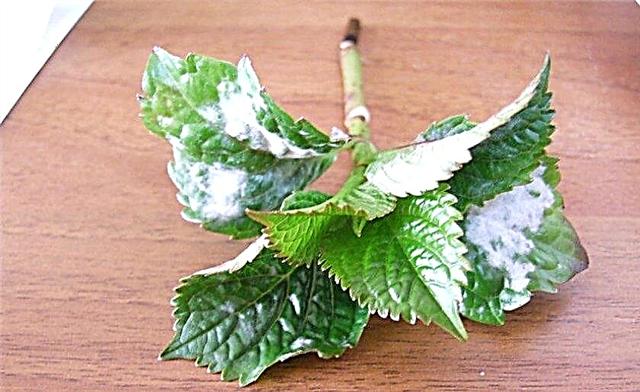
As for pests, their appearance in the garden cannot be prevented, but the population can be reduced without creating suitable conditions for growth and nutrition. Insects that infect hydrangea belong to the group of polyphagous, that is, they infect most garden crops.
Important! Insecticides are always effective, but they can not be used during flowering, as hydrangea — honey plant attracting bees. As a result of the action of the insecticide, insects will die.
The main pests:
- Aphids - small insects, in large numbers settling on the tops of shoots and young leaves. They feed on plant sap, so they damage plant cells at the stage of their formation. When such a leaf grows larger, it inevitably deforms, curls, turns yellow and falls off. Aphids are also dangerous in that they secrete a copper plaque on which soot fungi settle. Their disputes are constantly in the air and are activated when creating favorable conditions for development. The fungus does not directly infect the plant, but its spores impede the process of photosynthesis, which is why the leaves can die too.
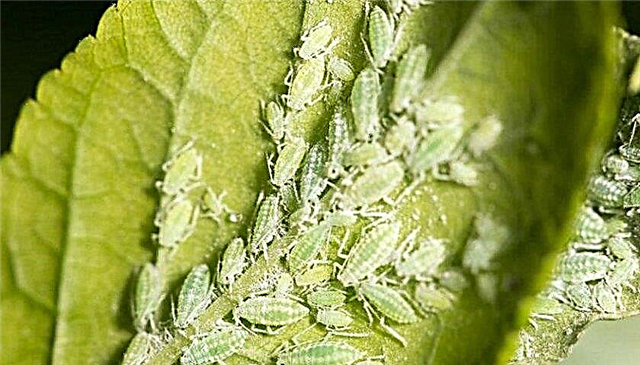
- Black grape weevil - injures the roots. Then, when his larvae grow up, they go on to eat bark and shoots. To combat weevil, spraying bushes with the drug "Fufanon-Nova" immediately before flowering.
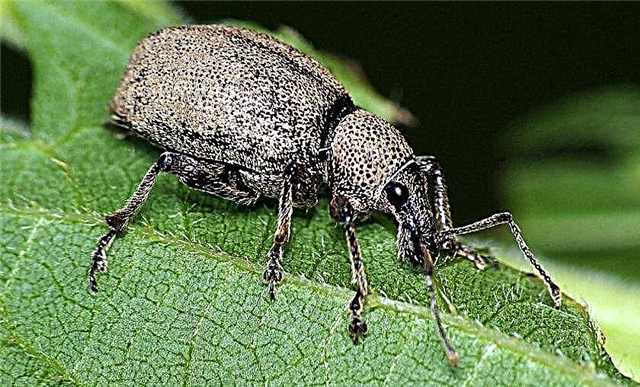
- Leaflet - It is also an active pest of horticultural crops. Small brown and whitish moths lay eggs on the tips of branches. From them appear caterpillars that feed on the upper part of the leaves. When the time of pupation arrives, they fold a leaf plate into a tube, inside which you can then find a caterpillar in a cocoon of cobwebs. Pest control is carried out in several ways: caterpillars are collected manually, trapping belts and pheromone traps are installed to prevent butterflies from laying eggs, and birds are also attracted to the garden to eat caterpillars with pleasure.

- Japanese beetle - also becomes a serious problem for the gardener. This is a large insect with copper-green elytra. The width of the beetle is 6 mm, the length is 12 mm. They leave their shelters early in the morning and feed on leaves, leaving large holes on them. Farmers shake insects in a bucket of soapy water or treat bushes with Metabrom-RFO (gas).

- Spider mite - a pest that feeds on leaves. It is most active in hot and dry weather. Like aphids, it sucks juice, leaving many small punctures on the leaves that discolor around the edges. For the treatment of bushes, most broad-spectrum insecticides are suitable (Actelik, Aktara, etc.).
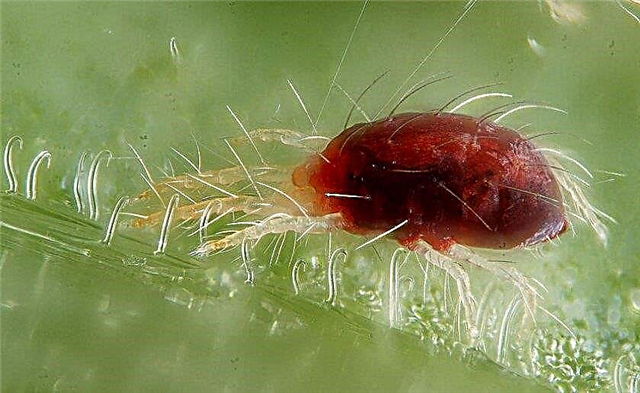
- Cockchafer (Khrushchev) - eats leaves, and its larvae damage the roots of young seedlings. An adult insect is an oval beetle up to 29 mm long and up to 14 mm wide. Its color depends on the species, but the main one is brown, shiny. To control the insect, leaf treatment with organophosphorus compounds is used. These are nerve-poisoning poisons that cause paralysis and death for the insect.

It’s easy to grow hydrangeas. They grow well on most soil types in temperate climates, including the Magic Starlight variety we are considering. In order to get lushly flowering bushes, it is enough to follow the simplest rules for planting and caring for the bush. And then you can enjoy the snow-white flowering hydrangea almost all summer.












